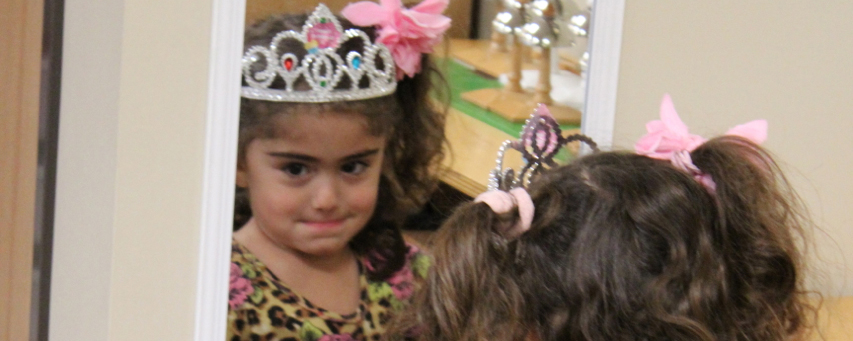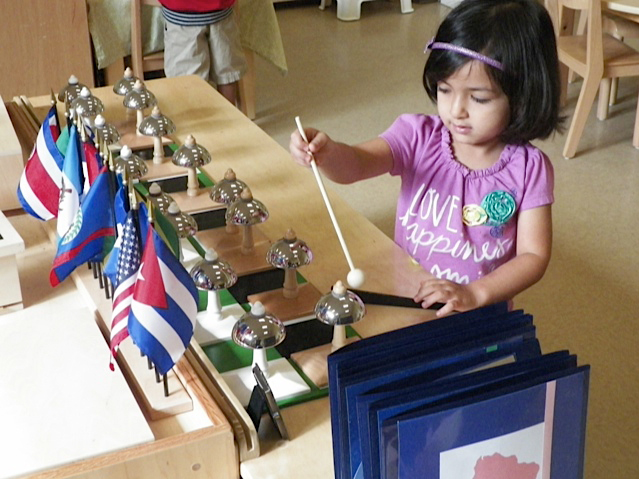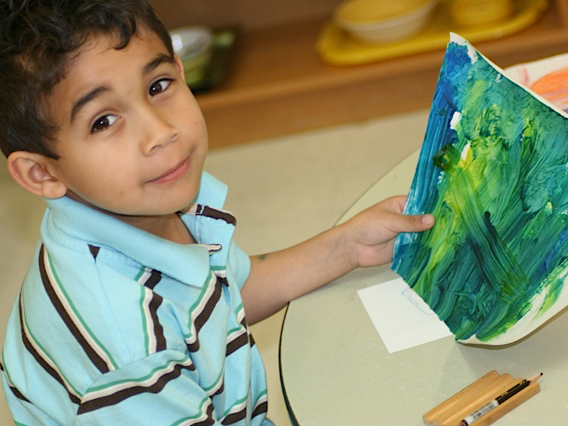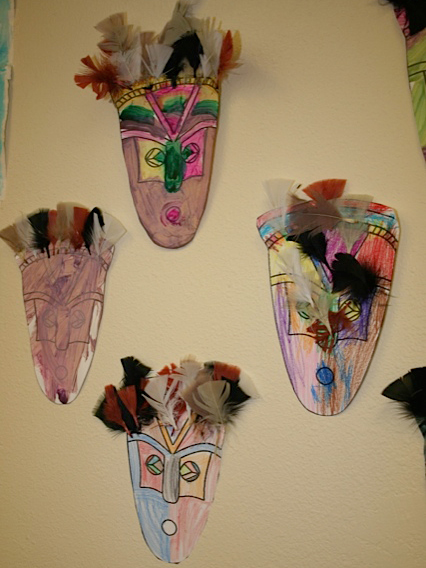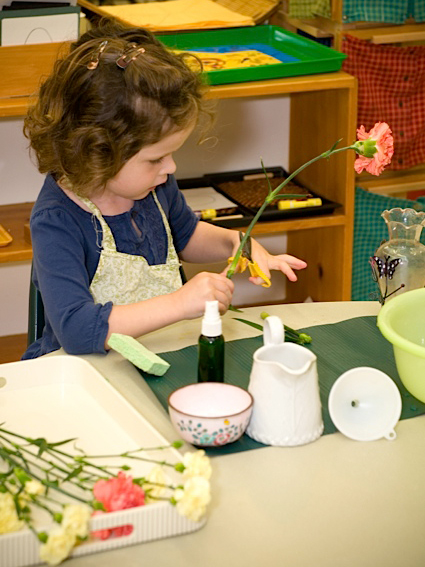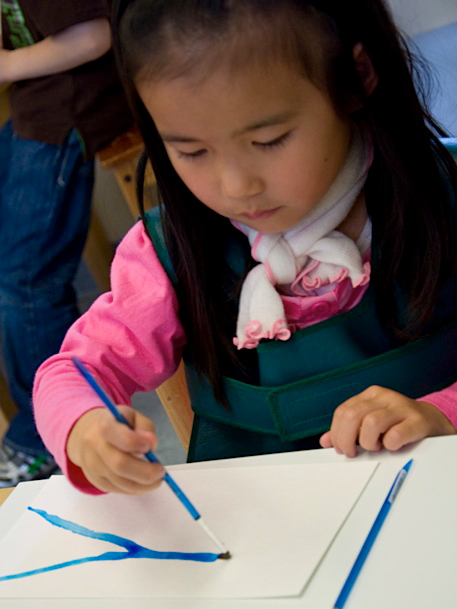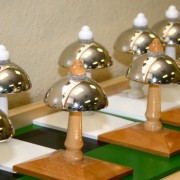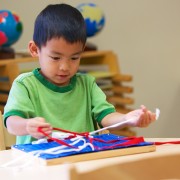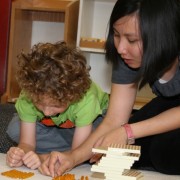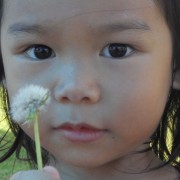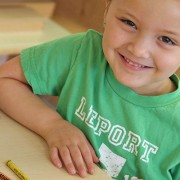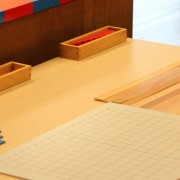Creative Play and Montessori Principles
Several recent articles in major newspapers discussed the demise of creativity in kids, and linked it to a lack of “unstructured, messy play.” For example, The New York Times reports:
For several years, studies and statistics have been mounting that suggest the culture of play in the United States is vanishing. Children spend far too much time in front of a screen, educators and parents lament — 7 hours 38 minutes a day on average, according to a survey by the Kaiser Family Foundation last year. And only one in five children live within walking distance (a half-mile) of a park or playground, according to a 2010 report by the federal Centers for Disease Control, making them even less inclined to frolic outdoors.
Behind the numbers is adult behavior as well as children’s: Parents furiously tapping on their BlackBerrys in the living room, too stressed by work demands to tolerate noisy games in the background. Weekends consumed by soccer, lacrosse and other sports leagues, all organized and directed by parents. The full slate of lessons (chess, tae kwon do, Chinese, you name it) and homework beginning in the earliest grades.
We’d agree with many of the issues these articles highlight, such as the deplorable amount of time US kids spend in front of TVs and computer screens each day, or the creativity-stifling impact of teaching that focuses on improving standardized, multiple-choice test scores.
At the same time, we don’t agree with the view of creative development underlying these articles. They pieces intermix valid criticisms of forced parental structure or too much computer time with a lot of talk about encouraging messiness, putting up with chaos, clutter and uncertainty, and fostering the child’s imagination by letting fantasy run wild. The implicit assumption, which we dispute, is that creativity is borne out of disorder and impulsivity. Polemics against too much forced structure are important and valuable. But more important is the answer to the question of why play is so important to children, of how, fundamentally, creativity comes about—and what the connection is to a child’s intellectual development.
Notice that descriptors such as “clutter” and “noisiness” evoke a picture of an environment quite different from a Montessori classroom, which seems to suggest that the structure of Montessori—the sequential materials, the orderliness, the purposefulness, the calm—are in some way undercutting a child’s creative development. If this were true, then why are Montessori educated children renowned for their curiosity, their creative problem solving, their ability to think outside of the box? Put differently, does a Montessori education stifle imagination and rob children of the essential play of childhood, as these articles suggest?
In our view, nothing could be further from the truth. The superficial messiness of play, the focus on imagination and chaos, obscures a more fundamental difference between play and many other activities. The New York Times authors get close to this essential attribute when they discuss a need for “unstructured, child-led and child-created” activities, such as building a fort out of sofa cushions, making up elaborate pretend stories to act out, or drawing creative pictures, and contrast them with adult-led, pre-structured pursuits, such as organized soccer leagues, step-by-step adult-led crafts sessions, or foreign language classes.
In our view, what is really missing from many children’s experiences is not a license to engage in impulsivity per se, but rather an environment which enables children to independently choose to develop and pursue their own interests, and which equips them with the skills and knowledge to do so competently and successfully. Let’s look at these three elements in turn: choice, pursuit of interests, and knowledge and skills.
First, to engage in creativity, a person’s mind has to be voluntarily engaged in an activity. Whether it is drawing a painting, writing an article, or solving a challenging puzzle, a mind works best when it wants to do something, not for external rewards (stickers, grades, trophies, praise), but for the satisfaction of the activity itself. When children play, they by definition do so by their own choice: no-one forces a child to pretend to sail off to adventures on the living room sofa, and no stars are handed out for arriving at the pretend destination.
Second, creative people actively pursue a goal. While you can passively default to sitting in front of the TV, you cannot passively play, or passively achieve any worthwhile goal in life, whether it is building friendships, achieving success in a career, or mastering a hobby. Play is goal-directed activity, even though it might appear unstructured from the outside. It also typically involves problem-solving in the broadest sense. When 3-year-olds builds a sofa-cushion fort, they have to figure out how to place the cushions, where to get that sheet they need for the roof, how to gain an adults’ help if they can’t get up to the shelf where the sheet is hiding. It’s their goal—and they solve whatever problems arise in their pursuit of that goal.
Third, creative people have to have skills and knowledge to actually achieve their ends. No matter how inspired a writer may be, how creative his story idea may sound, he needs to have mastered grammar, acquired a strong vocabulary, and have learned the personal skills, such as organization and time management, which will enable him to successfully pursue such a long-range, challenging goal. Especially in today’s advanced civilization, ignorance makes creativity impossible. Worthwhile achievements of any type require a plan, and the ability to execute on it. Play, at its best, is skill and knowledge building, in a wide variety of forms. The toddler who stacks Legos is working on fine motor skills; the 4-year-olds who pretend-play at shopping are practicing language skills and daily processes they’ll need to master to become successful adults. Even video games derive a lot of their appeal from building skills—albeit often very limited skills only applicable in the video game’s own world.
Montessori education fully embraces these three principles. In Montessori classrooms, children have 2-3 hour periods of unstructured work time, each morning and afternoon. Each child chooses what activity to take from the shelves and work with. He actively engages with the material, he keeps at it until he masters it. It is his choice, his goal, his effort that will bring him the satisfaction of mastering a new material. Every activity offered to children in a Montessori classroom is carefully designed to help the child develop a critical skill, whether it is learning to pour without spilling, or learning the letter sounds. In fact, Dr. Montessori was convinced that a child has to know about reality first, before he can be truly creative, so she created a well-rounded collection of materials, one that gives children a balanced exposure to the basic elements of the world and human knowledge. This balanced education ranges from basic life skills to simple arts activities; from training the senses to observe carefully, to categorizing observations systematically so they can be easily retrieved later; from math and language, to geography, science and music. Dr. Montessori saw this rounded education as the foundation from which an individual can develop true creativity, in the sense of doing new things with real materials and ideas. Every item in the Montessori classroom is carefully chosen to give each child the “keys” to the world that may serve to spark his interest in discovery and creativity.
Montessori students, from the earliest age, learn that they are in charge—they choose, they pursue, they build skills and learn how to use their time and resources effectively. (And, by the way, they also learn to clean up their own messes, and acquire the habits of mental and physical order that are, in fact, another prerequisite of real creativity!) By daily experience, they become active explorers who enjoy tackling and mastering new challenges, rather than passive consumers reluctant to move off the couch, or to open any book beyond required homework.
The crucial difference is that Montessori education develops the capacity for creative effort, rather than mere impulsivity. It is this, the ability to apply oneself joyously to the task of pursuing or creating something personally meaningful, that is the hallmark of creativity. This is why the child who is allowed to uncritically “do what he wants,” without developing a capacity for discipline in pursuing what he really wants, inevitably ends up passive. Buy your child a new toy every time he gets bored, without giving him the opportunity to use his mind to find something interesting to do with the toys he has, and the result will be that he simply becomes less willing to do the work of escaping his own boredom.
So if your children want to build castles in the yard and have a princess picnic with a friend, or engage in messy arts projects, as Montessorians we say that by all means you should encourage them to do so. We just encourage you to keep in mind that creativity is the ability to apply effort in uniquely interesting ways. And because of this, we hold that a pro-effort, child-led classroom environment such as is found in a well-run Montessori school, helps rather than hinders the development of creativity. And as the icing on the cake, it will also help your youngsters learn to clean up the messes they make in their daily play!
– Heike Larson

